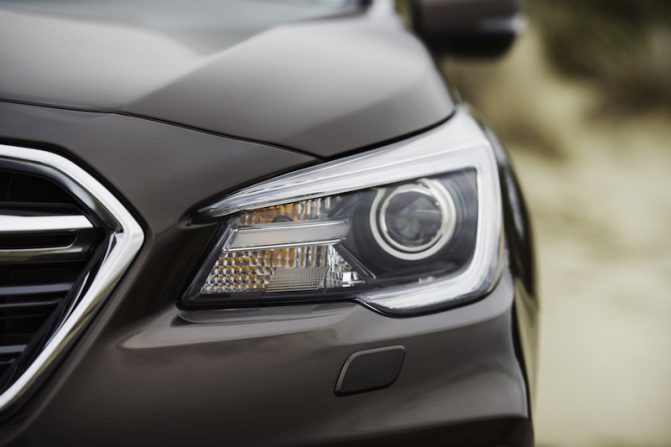There are several types of headlights out there available for your car—each with its pros and cons. We’ll discuss everything you need to know about headlights in this post. From the history of car headlights, halogen vs LED headlights, housing types, and which one might be the right headlight for you.
A Brief History About Headlights
Headlights have come a long way. Gone are the days of sealed beam headlights that barely light up the road. And now we have several options for our cars, with headlights that can light up a Pink Floyd show if need be.
Sealed beam headlights were the earliest iteration of the modern headlights we know today. Introduced in the 1940s, it’s usually a metal construction with one reflector, one tungsten filament bulb within it, and a glass cover. They’re not very bright, but we had to make do with them back then.
The main downside of the sealed beam headlight is that they’re not serviceable. Meaning when the bulb dies, you can’t replace the bulb – you’ll have to replace the entire assembly. In the 1960s, the auto industry introduced halogen bulbs for headlights, but the sealed beam construction remain popular until the 1990s.
In the 1990s, reflector housing became more popular. It allows for multiple bulbs to be integrated into one housing. And the major advantage of this over sealed beam lights is that if the bulb dies out, car owners don’t have to replace the entire construction – they can just replace the bulb.
It’s still popular today as they are cheap and efficient. But carmakers often use projector headlights these days with LED, especially in their higher-end cars. They look better, and are brighter, giving drivers more visibility. Additionally, there are all sorts of tech that they cramp into headlights nowadays.
For example, Porsche’s PDLS (Porsche Dynamic Light System) is an optional extra where the projectors will bend according to the direction of the wheel, directing the light to the direction where you’re going. Whether this is actually useful or just a gimmick, we’re not quite sure. But it’s fascinating to see how high-tech car headlights have become.
Halogen VS LED Headlights: The Differences
So, that’s a brief history of how the car headlights have evolved. As mentioned, LEDs are becoming more popular, but you’ll still see a lot of halogen headlights out there on the road. This is because both have their pros and cons. But before we get to the differences, here’s how halogen and LED bulbs work:
Halogen VS LED Headlights: How They Work
The halogen is an evolution of those early incandescent bulbs. These bulbs work by using an electrical current that heats the tungsten filament, which then glows resulting in the light you see. Since it takes a moment for the filament to glow, this is why halogen bulbs will take a couple of seconds to come to their full brightness.
The difference is that in a halogen bulb, the filament is encased in a quartz capsule filled with halogen gas, specifically iodine and bromine gases.
This allows a “halogen cycle“, where the particles burning from the tungsten filament are redeposited back and can be reused. This “recycling” process gives halogen headlights a brighter glow. Additionally, they last around 1,000 – 2,000 hours longer than incandescent bulbs.
Meanwhile, LED stands for light-emitting diode. When the electricity goes through the diode, it will emit light from a process called electroluminescence.
The video above is a bit technical, but it gives a great explanation of how LED works. But in a nutshell, LED uses a special diode that glows when enough voltage goes through them. They have a binary on and off stage, meaning it turns on and off instantly, unlike halogens which require a bit of time.
With that out of the way, here are the differences between halogen and LED bulbs:
Color Temperature
The first and most noticeable difference between the two is probably the color temperature. Because halogen light uses a tungsten filament to create its light, the color temperature it produces tends to be warmer. It’s usually a yellow-ish to warm white color, somewhere around the 3,200K – 5,000K range.
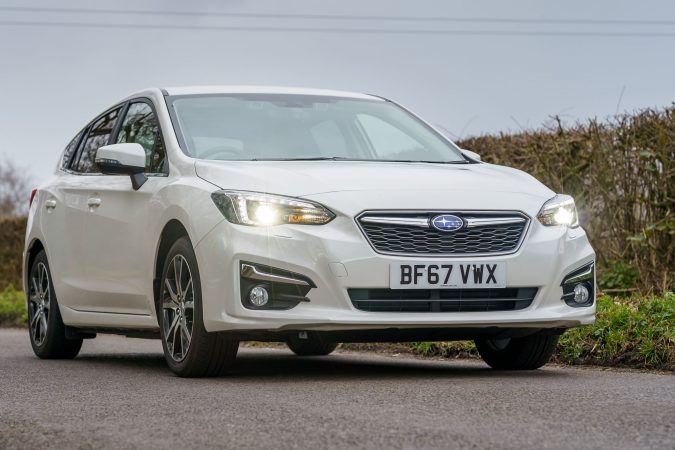
Meanwhile, technically LEDs can produce any color the manufacturer desires. That’s why you see a lot of color LEDs on sale, even smart LED bulbs for your home that can change color through an app. But in cars, they’re generally bright white with a blue-ish tint, usually somewhere around 5,000K – 6,000K.
Both are fine and produce enough visibility for nighttime driving. However, the bright white of LEDs does offer slightly more visibility, and it generally looks better. So, this round goes to LED headlights.
Brightness
Brightness is usually measured in lumens. Halogen headlights usually get to about 700 lumens each in low-beam. While in high beams, they get to around 1,200 – 1,400 lumens, which is bright enough in most scenarios.
But as you’d expect, LEDs can get much brighter. They’re usually somewhere around 2,000 – 4,000 lumens each. But in some cases, they can get to as bright as 8,000 lumens. This makes them far more ideal if you often drive through roads that aren’t well-lit at night.
Durability
Durability is yet another area where LED lights shine (pun intended) over halogen lights. Halogen lights will last anywhere between 450 to 1,000 hours before they die out. This is a decent lifespan and you’ll get a lot of mileage before you have to replace them.
However, LED headlights will last much longer. The exact number will vary depending on the car’s make and model or the quality of the LEDs used. But expect it to last anywhere between 30,000 – 50,000 hours. This means you’ll have to replace them less often. To put it into context, I once had a car with LED headlights for six years and I never needed to replace the LED.
Price
While LEDs last longer, expect an expensive bill when you need to replace them. Halogen bulbs typically cost around $20 – $40 each, with another $50 for labor. Meanwhile, LEDs will cost between $100 – $200 each to replace. Expect labor to be about the same, as the replacement process is largely similar.
This is why you still see a lot of halogen headlights on the road: because they’re cheaper to produce for manufacturers, which makes them cheaper to buy for consumers.
LEDs are often reserved for higher-end cars with bigger profit margins. While cheaper cars with narrower profit margins use halogens which are cheaper and allow carmakers to maximize profit.
Heat
Halogen bulbs are inherently hot. This is because they burn that tungsten filament to produce light, and the filament gets hot in the process. Meanwhile, many people say that LEDs don’t get hot, but this is somewhat a misconception.
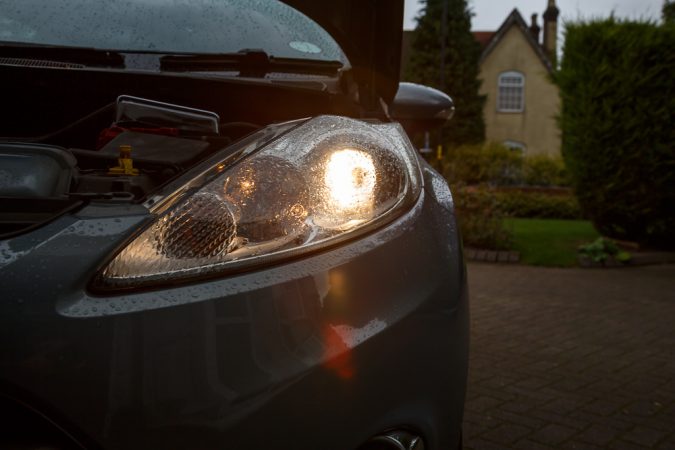
While it’s true that the LED bulb itself doesn’t get hot, it’s casing – which houses the chip that controls the switch – gets very hot. Not all of the electricity goes into the diode, especially when deformities start appearing on the diode. This results in heat and exudes it to the surrounding components.
This is why LED headlights usually require a heat sink and even a fan to cool down surrounding components to prevent damage, including damage to the wiring and electronics inside the LED itself. Hence why switching to LED headlights isn’t as simple as swapping the halogens out for LEDs. This segues us nicely to our next segment:
Halogen VS LED Headlights: Should You Switch To LED?
Now you know the differences between halogen vs LED headlights, the question you probably have now is which one’s better? If you have halogen headlights, should you switch to LED?
LED’s durability and brightness might tempt you to convert your halogen headlight to LED. They might be more expensive, but if they last longer, why not? But there are a few things that you have to keep in mind before you switch to LED headlights, chief among which is the headlight housing types:
Housing Types
Modern cars have either a reflector or projector headlight housing. The reflector housing uses glass reflectors to amplify the light from the bulb. This amplifies the brightness, giving the light more range and visibility for the driver. Halogen bulbs typically use reflector-type headlight housing, but some higher-end cars may use halogens with projectors.
Meanwhile, projectors use, well, projectors. It’s also a glass construction but with several lenses, so it can alternate between high and low beams with just one bulb. It will also amplify the brightness – much like reflectors – but projectors can focus the light from the bulb, giving it better range and directing the light more efficiently.
OEM LED headlights will typically use projector-type headlights, this is because LEDs don’t work well with reflectors. The first problem is that many LEDs aren’t omnidirectional and won’t illuminate the reflector surface evenly as halogens would. This results in blank spots in the light beam, resulting in less efficient illumination.
This can also produce excess glare, which can blind oncoming drivers. So, not only LEDs are inefficient with reflectors, they can endanger you and other drivers on the road.
Finally, as mentioned, LED creates a lot of heat which affects surrounding components. This is why LED headlights require cooling, and that’s why they often come with a heatsink and even a fan to cool it down. While the cooling is integrated into the LED assembly, you’ll still need to make sure that the LED will fit your car’s make and model.
All this means that switching to LED headlights isn’t as simple as it seems. In many cases, you can just swap your halogen bulbs for LEDs. But if you have reflector headlights, this will likely result in a less-efficient headlight – which moots the point of having LED headlights.
Should You Switch To LED?
So, what’s the verdict then? Should you switch to LED headlights? We think it’s not necessary, and you shouldn’t go through the trouble. Halogen headlights work just fine, and unless your car already has a projector headlight, switching to LED may not yield the desired result. Not to mention, they’re quite expensive.
However, if you drive at night often, then switching to LED may be worth it. This means you’re likely to use the headlights more often, and since LED lasts longer, you won’t have to swap it out as often as you would with halogen headlights.
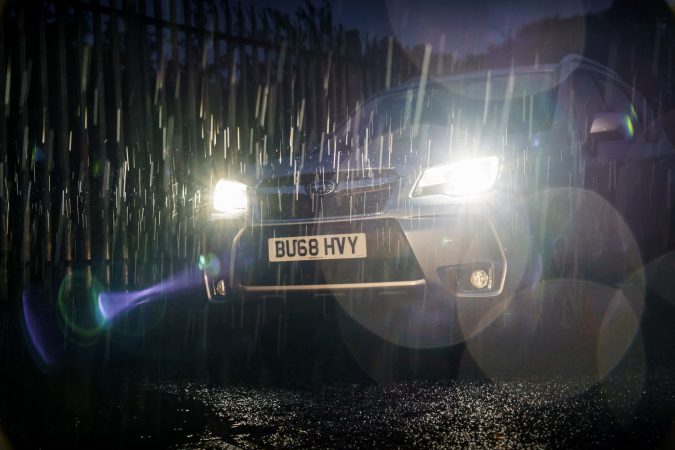
Another scenario where you might benefit from it is if you live somewhere that snows. LED headlights can give you better range and visibility. If you feel like your halogen headlights aren’t sufficient on those cold winter nights, you might benefit from switching to quality LED headlights.
But if you’ve never found yourself in a situation where your halogen headlights don’t feel bright enough, then switching to LED headlights will just be a waste of your time – and money!
Halogen VS LED Headlights: How Much Does LED Cost?
Still interested in switching to LED headlights? Alright, let’s get to the costs then. As mentioned, an LED headlight bulb costs around $100 – $200. But ideally, you should also have projector-type headlights to get the most out of those LEDs.
In any case, if you want to convert to LED headlight bulbs, here are a few things you’ll need to keep in mind:
- Pay attention to the LED bulb type. If you’re going to use reflector-type headlights, an LED bulb with a thin and narrow array will be most ideal as it mimics halogen bulbs. Such as the Diode Dynamics SL1.
- Make sure you buy LED bulbs with a good heat sink and fan. This helps to remove the heat that LEDs produce, and will maintain the life of the LED bulb and surrounding components.
- As mentioned, ideally you should have projector headlights. Not only does this maximize the brightness and range of LEDs, but it will also prevent glare for other drivers. Aftermarket projector kits start at around $30, while projector-type headlight housing starts at $150 each. But the cost will vary greatly depending on your car’s make and model.
- Some LED manufacturers may list what cars their product fits in. You’ll need to pay attention to the wiring, connector, and the driver of the LED. Make sure they’re not too long or too big to fit in your car’s headlights.
The video above explains what you will need to pay attention to when purchasing LED bulbs for your car’s headlights. We recommend watching it before you make a decision on which LED bulb to buy for your vehicle.
Assuming you only need to buy the LED lights and an aftermarket headlight projector kit, it’ll cost you somewhere between $150 – $300 to switch to LED headlights.
How About Xenon And Laser Headlights?
Even though they’re less common, we can’t talk about headlights without mentioning Xenon and laser headlights. Xenon bulbs – or often referred to as HID – use Xenon gas as a means to create light. Unlike halogens, Xenon bulbs don’t have a filament, and it’s the gas itself that creates the light.
They usually produce a blue-ish white light, similar to LEDs. And they can get up to about 3,000 lumens, about twice as bright as halogen bulbs. They cost around $50 each, which makes them much cheaper than LEDs. However, Xenon tends to produce a very strong glare that can blind other drivers, especially in a headlight housing that wasn’t designed for Xenon bulbs in the first place.
If you’re wondering, yes, Xenon or HID is legal as long as it conforms to Federal Motor Safety Standard requirements. There are conversion kits for Xenon that you can purchase and these should meet those standards.
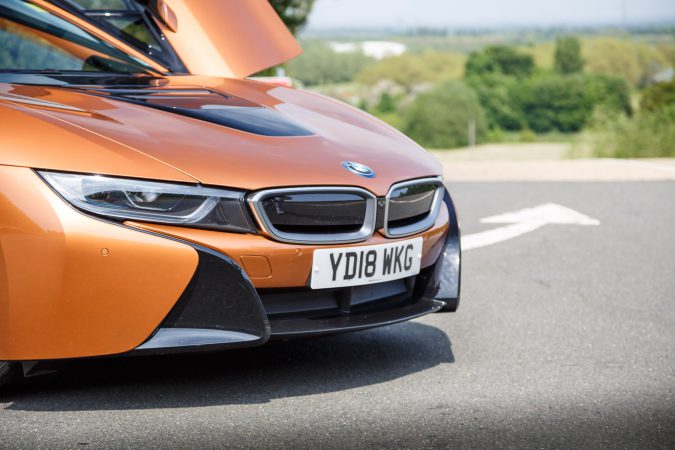
Meanwhile, laser headlights are relatively new. Laser headlights work by shooting several blue laser beams onto a set of mirrors. The mirrors then focus it onto a lens, which then emits a bright white light onto the road, similar to how a projector headlight works.
There are currently very few aftermarket laser headlights, and the legality is still questionable. We don’t recommend switching to laser headlights just yet, and LED is probably your best option if you want a bright white light from your headlights. Not many carmakers use laser headlights, one that has started adopting it is BMW, and it’s present only in their higher-end cars such as the BMW i8 and 7-series.
Halogen VS LED Headlights: How To Replace Headlight
At this point, you’re probably wondering how to replace the headlight bulb. Whether you’re replacing a halogen bulb with another halogen bulb, or with LED, the process is largely the same. But it may slightly differ depending on the car’s headlight assembly.
We’ll give you a quick guide on how to replace your car’s headlight bulb:
How To Replace Headlight Bulb
- Locate the headlight bulb’s socket, it’s usually easily accessible from the engine bay. But some cars may require you to remove a cover or other parts such as the washer fluid bottle before you can access it.
- In many cars, you can twist the bulb and it will come right out. But some cars may require you to loosen a few retaining screws before you can remove them.
- Disconnect the bulb from the connector.
- Plug the new bulb into the connector. Again, if you’re switching from halogens to LEDs and you have a reflector-type headlight housing, make sure you purchase one that mimics the omnidirectional shine of halogens. Also, make sure that it will fit your car.
- Plug the bulb back into the headlight plug, and twist until it locks in place.
- Switch on your headlights, and make sure it’s working properly.
It’s quite simple and the process is largely the same in most cars. An extra tip: if you’re using a halogen bulb, avoid touching the new bulb’s glass with your hands. The natural oil from your hand or the slightest amount of dirt can cause early failure.
How Do I Replace The Headlight Housing?
Headlight housing needs replacing when it’s damaged. Or if you’re not happy with your current headlights, many cars have higher-end OEM options that you can purchase. Usually with projectors instead of reflectors.
However, the process varies depending on the car’s make and model. The headlight assembly in some cars is easy to replace, others may even require you to remove body panels before you can remove the headlight itself. In most cases, here’s what you need to do:’
- Remove the bolts that are holding the headlight in place.
- Afterward, disconnect the electrical connector and the headlight will slide right out.
- The new headlight may or may not come with a new bulb and the bulb wiring harness. If it doesn’t come with those, you’ll need to remove the bulb (including the blinker bulb) and harness from the old headlight assembly. This process typically requires removing a few screws.
- Install the harness and then the bulb into the new headlight assembly.
- Insert the bulbs back into the socket.
- Reconnect the electrical connector to the new headlight assembly.
- Reinstall the bolts that hold the headlight assembly.
- Turn on your headlights to make sure that all the lights are working properly.
As mentioned, the process to replace your headlight housing varies depending on your car’s make and model. We recommend checking your owner’s manual or finding a guide online for your specific make and model.
Related topics:
Headlight Bulbs: Halogen vs LED – Facts
- Halogen and LED headlights are the two most common types of headlight bulbs found in vehicles today.
- Automakers generally favor LED headlights, which are found in most modern vehicles as a standard or optional feature.
- The Insurance Institute for Highway Safety notes that LED headlights are usually the top performers in their tests, but some halogen bulbs have outperformed some of the poorest-performing LEDs.
- Consumer Reports testing found that LED headlights did not offer any more illumination than traditional halogen or HID headlights, but the distance a headlight illuminates straight ahead is the most important factor.
- Halogen bulbs are less energy-efficient than LED bulbs, run hot quickly, and require more energy.
- LED bulbs are more energy-efficient, offer superior durability, are brighter, cast a larger light pattern, and offer more opportunities for creative headlight designs.
- LED headlights are more expensive and complicated to repair or replace than halogen bulbs.
- Aftermarket conversion kits for LED headlights can be added to older vehicles but are not legal in all states.
- Xenon bulbs are HID headlights that are the brightest and whitest headlights available.
- Headlight technology has evolved since the late 19th century, and LED headlights are becoming more popular than halogen bulbs on today’s roads.
Halogen VS LED Headlights: In Conclusion…
When it comes to halogen vs LED headlights, each has its pros and cons. Halogens do the job just fine, but LEDs are likely to give you more range and visibility, especially during those cold winter nights.
However, LEDs are more expensive, and you’ll need to choose the right type of LED bulb if your car still uses a reflector-type headlight housing. Otherwise, it can produce glare and can endanger other drivers, it may also earn you a ticket.
In the end, we can’t decide for you which one’s better when it comes to halogen vs LED headlights. Halogens are cheaper, but they’ll need replacing more often. LEDs last longer, but they are more expensive and there are a few things you’ll need to consider before you switch to LED headlights.
In any case, we hope this article has been helpful for you. And now you can make an informed decision on whether or not you should switch to LED headlights, good luck!

